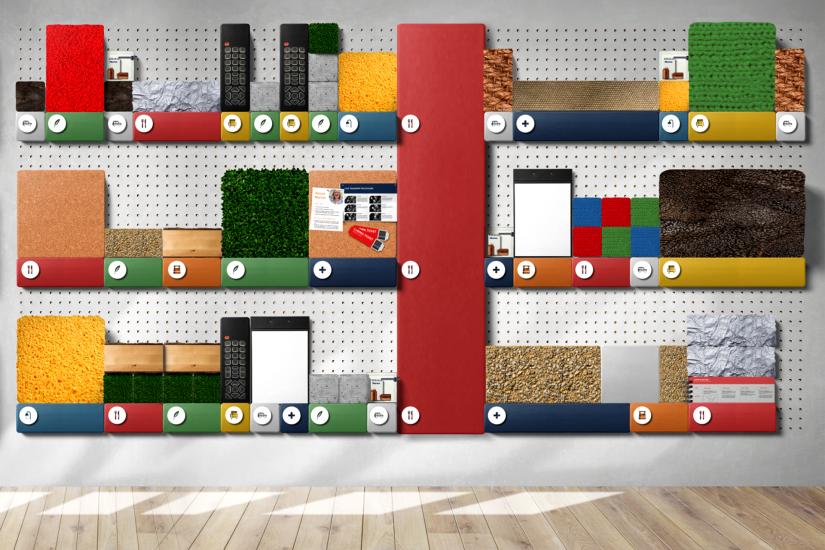In a supported accommodation home in Sydney, design is transforming the lives of adults with intellectual disabilities and the carers who support them.

Run by disability services provider Northcott, the home was in desperate need of a communications upgrade. The established method – an ad hoc collection of procedural information designed to help staff manage residents’ needs and schedules – was overwhelming, impersonal and gave residents little input into how they spent their time.
It’s a sea of posters, signs and printed collateral basically covering every surface without following any particular system – Ryan Curtis, a studio leader in the Socially Responsive Design program within the UTS School of Design.
So, Northcott Innovation – the company’s ‘ideas factory’ – turned to the Socially Responsive Design program to collaborate. The goal? A new scheduling system that would reduce visual clutter, create opportunities for connection between residents and staff, and give residents more autonomy over their everyday lives.
Design that creates connections
The UTS Socially Responsive Design program calls on the university’s visual communication expertise to solve a range of social and community challenges. For the Northcott project, the designers – third-year visual communication students* – were asked to capture residents’ needs, schedules and preferences in a way that would drive human connection.
The result was Building Better Days, a modular visual scheduling tool that meets the needs of both residents and frontline support staff. The system is comprised of a series of wall-mounted, colour-coded blocks and icons that represent different types of activities – for example, a green block with a leaf icon signifies outside activities, while a red block with a knife and fork logo represents mealtime.
Together, staff and residents work with the blocks to construct the resident’s weekly routine. The length of each block signifies the duration of each activity, while the height represents how much the resident enjoys it. For residents with higher support needs, blocks can be further customised with materials they associate with each activity.
A resident who enjoys going to the beach might add a block of red foam that he associates with his bodyboard. This added sensory layer is designed to help residents make those associations with each section of time allocated within their routine. – Ryan Curtis
As well as creating intentional moments of interaction between staff and residents, the system also empowers residents to be active participants in planning their days. It’s an approach that responds to Northcott Innovation’s commitment to supporting people with disability to live as equals in their community.
The depth to which their project also spoke to the dignity, choice and control of individuals with complex disabilities was really impressive. – Samantha Frain, Northcott Innovation’s Executive Director.
Design that transcends boundaries
Building Better Days is one of many UTS School of Design projects that bring together students, academics and industry partners to create better ways of living. The School is committed to delivering design solutions to a range of contemporary challenges, redefining design beyond its traditional boundaries.
It’s no surprise, then, that UTS is emerging as a leader in social and service innovation design – that is, design that delivers meaningful, human-centred change in a wide range of social justice contexts.
A lot of people think that the role of design is to make things look better, but for designers, attending to the material and visual quality of the world should always be in service of larger ambitions. As a school, we’re really committed to the idea of using design to transform the systems and practices that underpin the way we live. – Professor Kate Sweetapple, Head of the UTS School of Design.
Want to learn more about using design to lead positive change? There’s a range of new postgraduate design degrees available at UTS.
Read more about UTS Design degrees
Register your interest for our next postgraduate info session
* Building Better Days was created by Oscar Fielke, Emily Savage, Nick Mooney, Shaoqian Lyu and Alipta Nayak Dhall.

